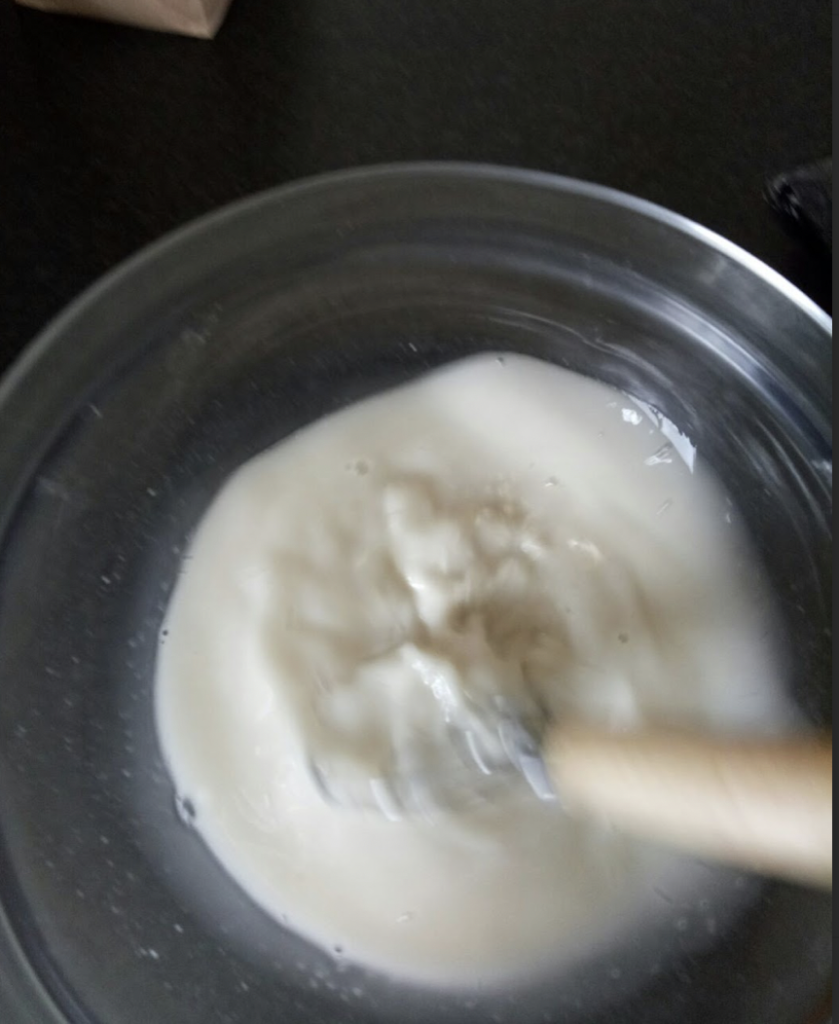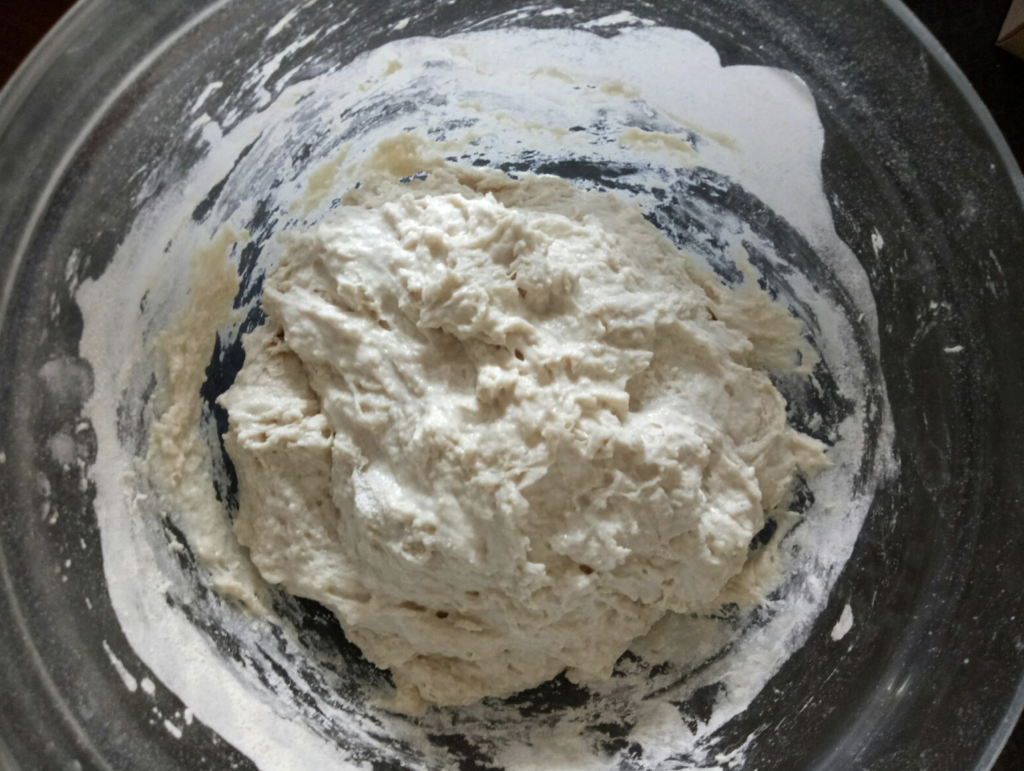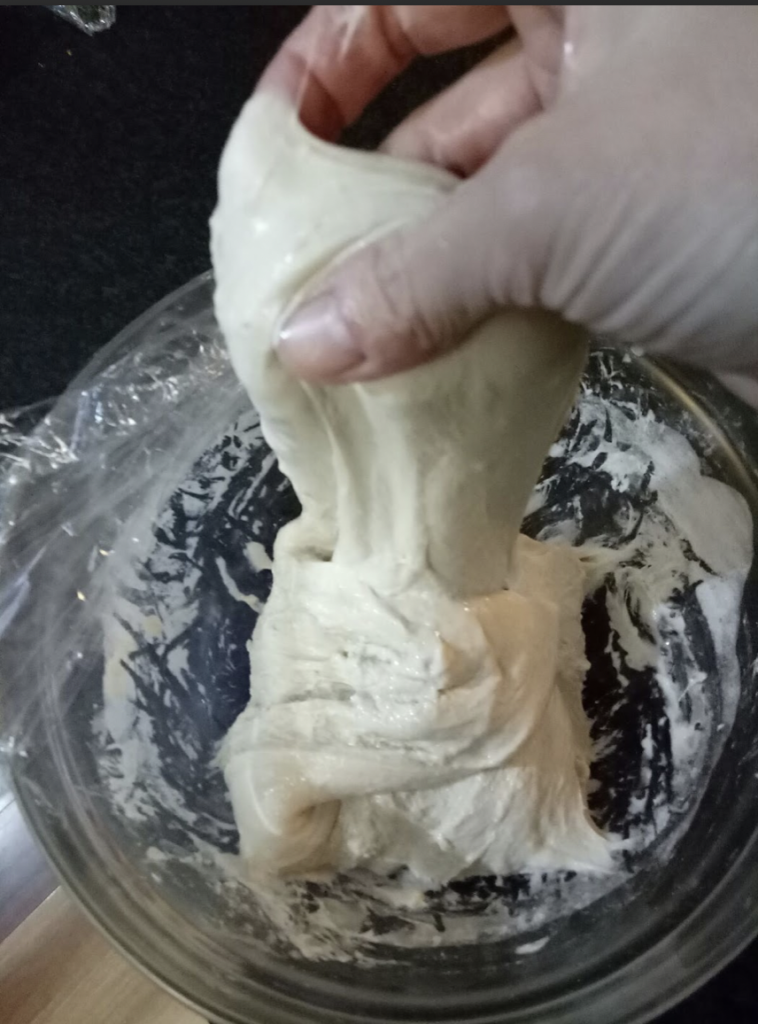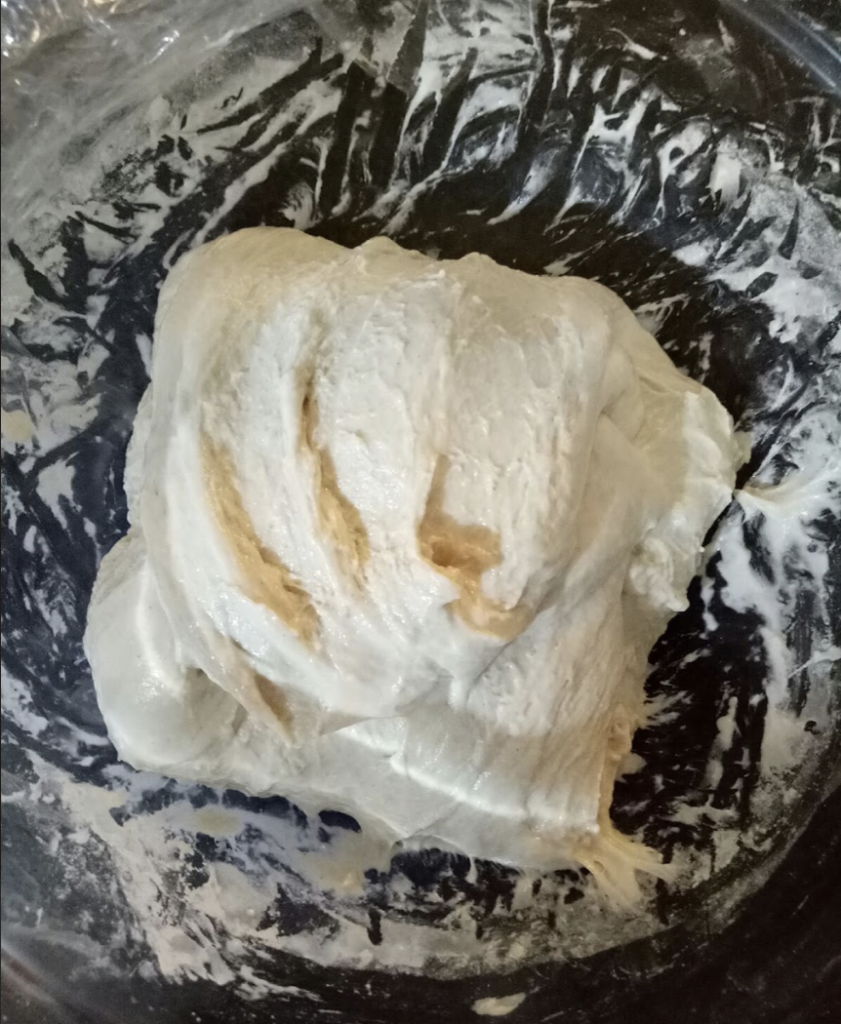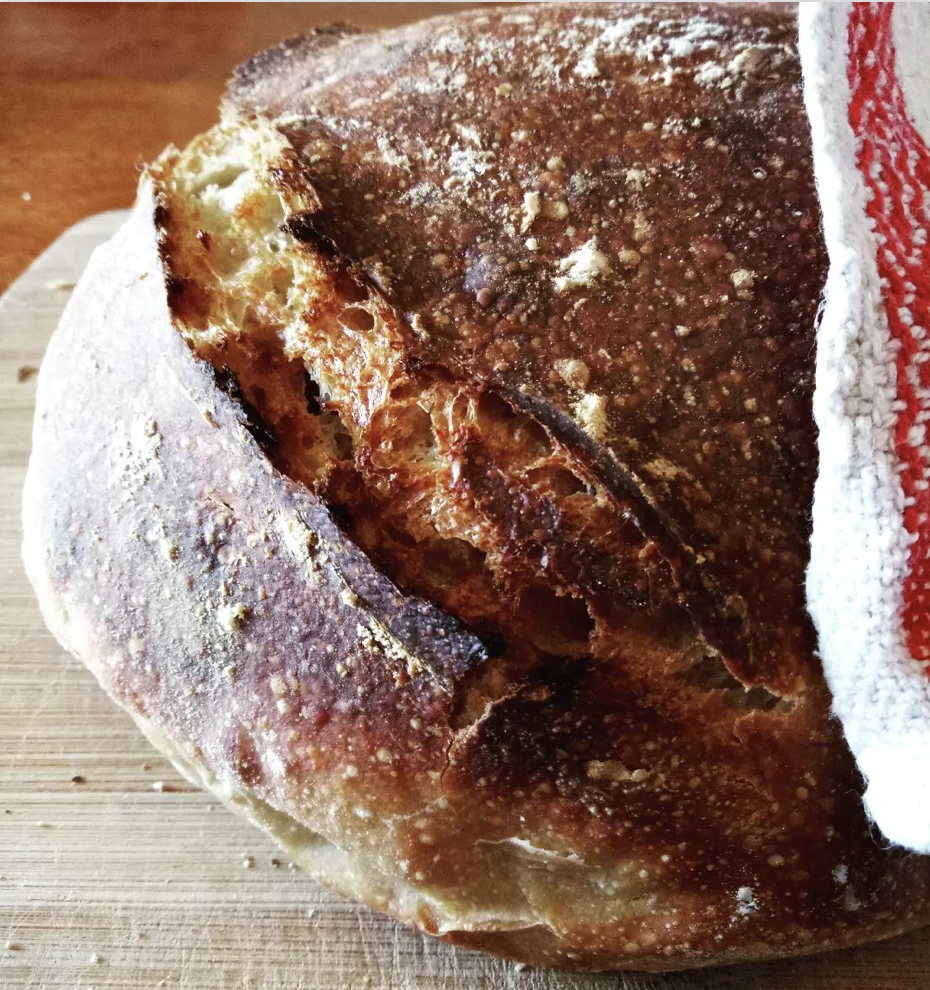Looking for a delicious way to use up your sourdough discard? Try making homemade sourdough granola! This easy recipe combines the wholesome goodness of homemade granola with the unique flavor and crunch that sourdough starter adds.
It’s a game-changer for your breakfast or snack routine—perfectly crispy, flavourful, and a great way to reduce food waste.
Sourdough granola makes the perfect breakfast topping for fresh fruit and creamy Greek yogurt—a delicious and nutritious way to start your day!
Jump to Recipe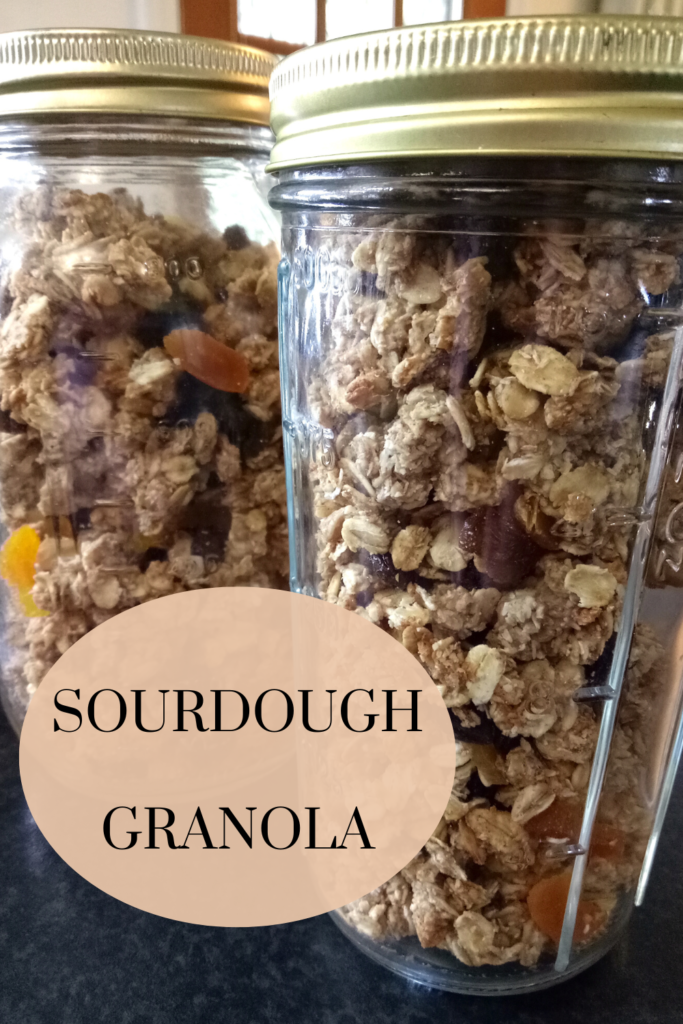
Personally, I love little clusters in my granola, and in the past I have used egg white (like in this recipe) to achieve a bit of chunkiness. But using sourdough starter binds all the ingredients together into clumps so well that there is no need for any additional binders.
You can control the level of crunch by experimenting with the baking times. For more crunch, bake longer. For less crunch, bake a little less.
You can also choose to have add ins or to just make the base recipe, depending on your own taste preferences. I love add ins and these are put in at the end of baking.
Some add in ideas that I regularly use are dried fruits like sultanas, apricots, figs, dates and apple. If you are a fan of nuts, any nut goes well with this recipe! One of my personal favourites is almonds.
This is such a simple and adaptable recipe, just mix wet ingredients and dry separately, then mix together before baking.
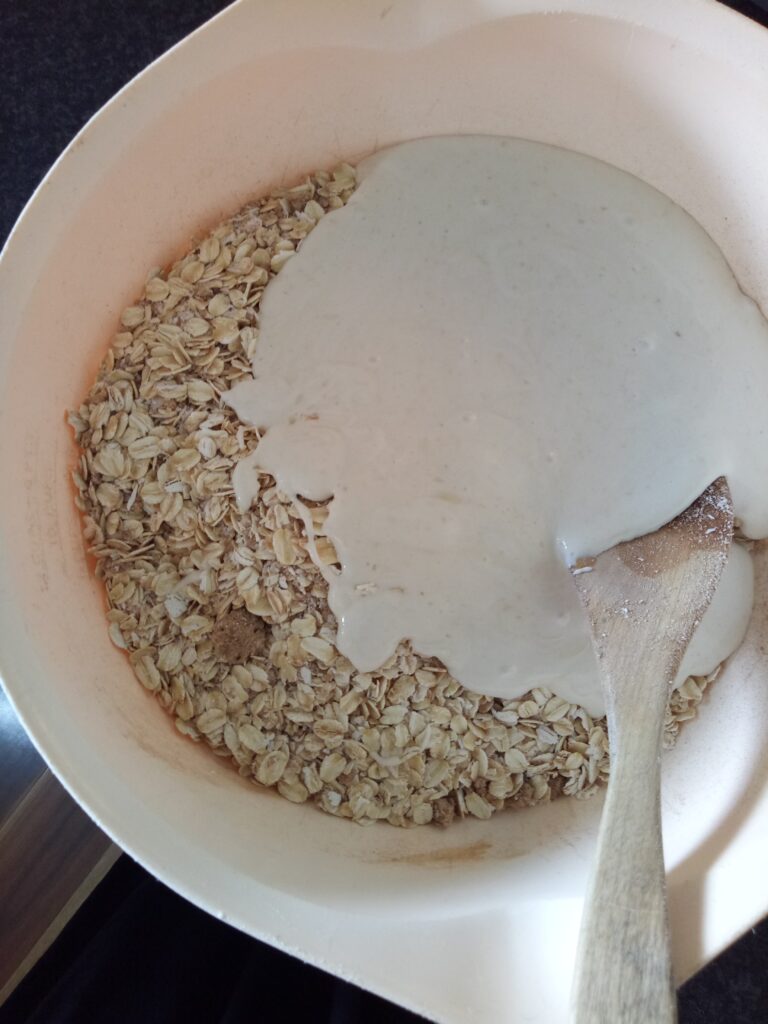
The dry ingredients all get thoroughly coated, making a clumpy, crunchy granola once baked.
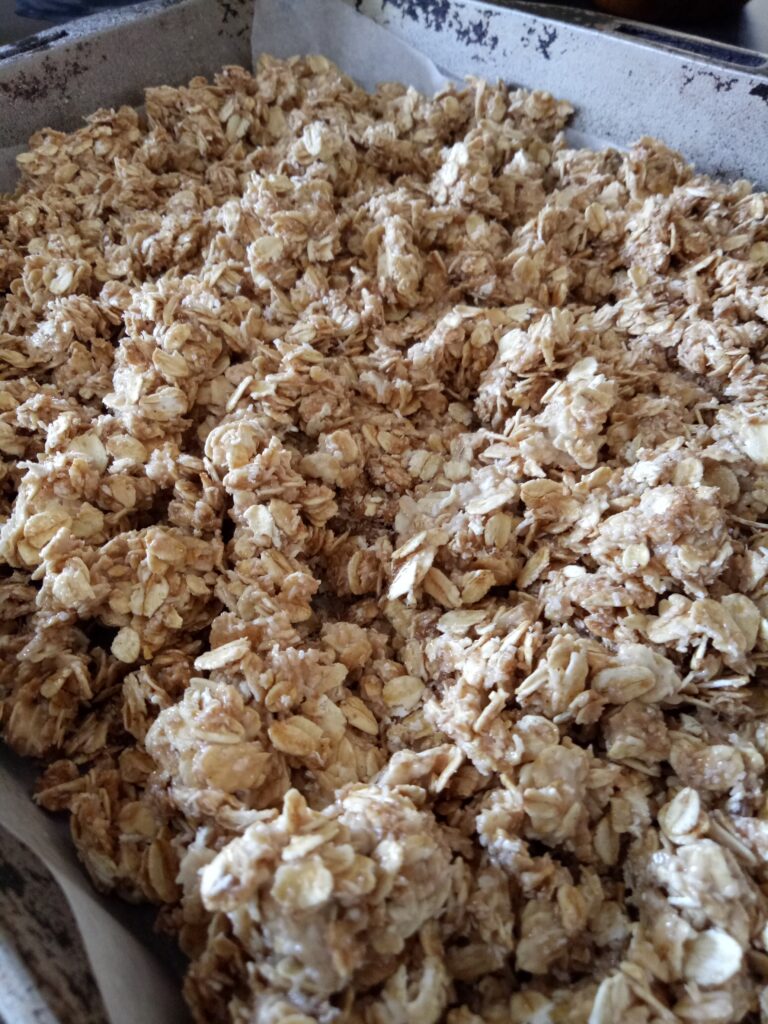
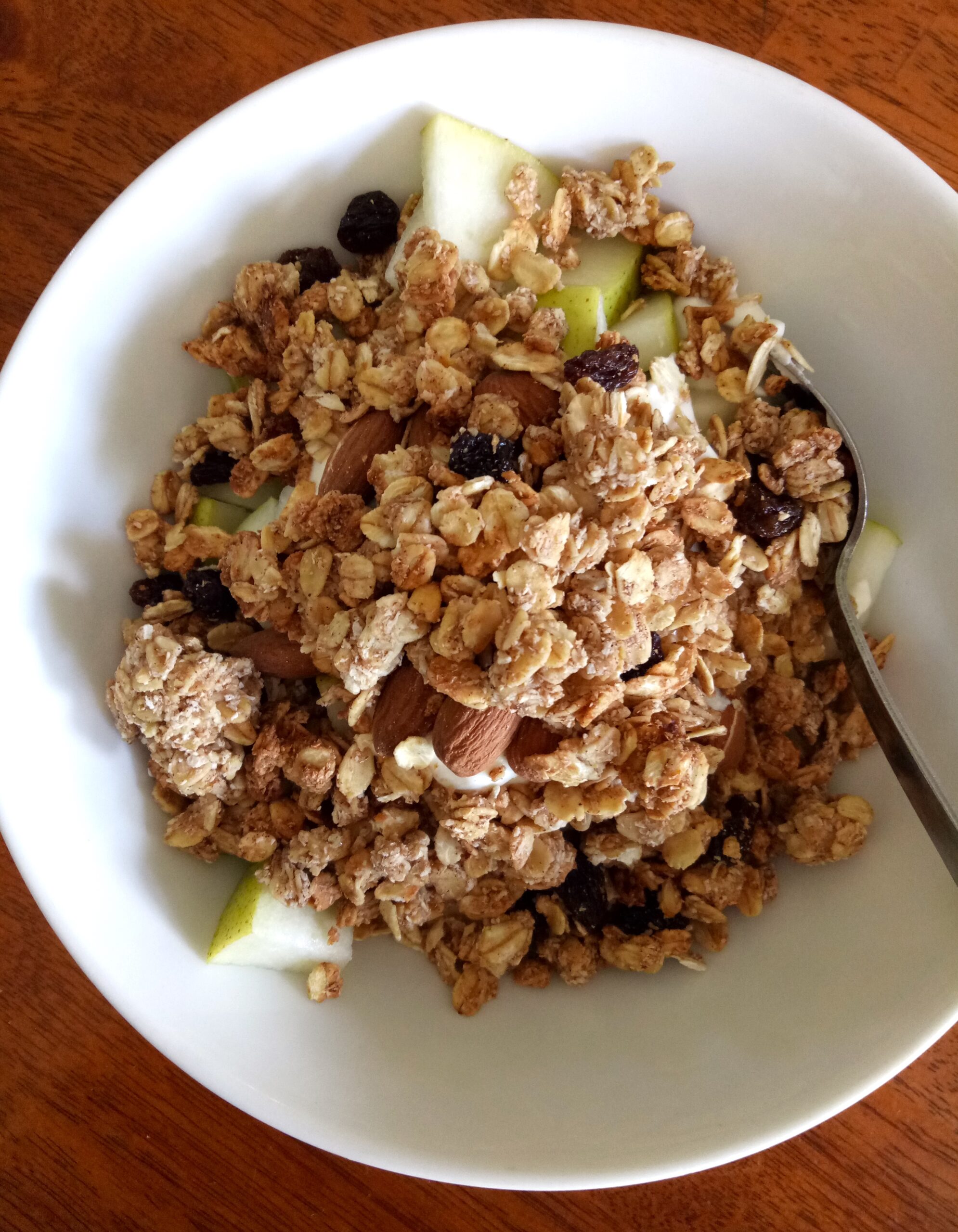
Ingredients
Method
- Pre heat oven to 160 degrees Celsius
- Place all dry ingredients (except fruit and nuts) in a large bowl and mix.
- Place all wet ingredients in separate bowl or glass jug and mix thoroughly.
- Pour wet ingredients over dry and mix thoroughly.
- Line a large roasting tray or a tray with sides. I use non stick baking paper. Alternatively, use a non stick tray.
- Tip your mixture into the tray and even out to make an even layer.
- Place in the oven for 10 minutes, remove the tray and turn the granola with a spatula.
- Place back in the oven and repeat until desired darkness is achieved. I recommend a total cooking time of 30 – 40 minutes.
Don’t forget to stir in your add ins at the end, if you’re using them! Once completely cooled, store in an airtight container (I like to use mason jars).
You can eat this granola on it’s own as a snack, on top of fresh fruit, with milk of your choice or one of my personal favourites, on top of yoghurt.
If you love to customise, here are some add in options:
Add ins (examples of)
1/2 cup chopped peanuts
1/4 cup chopped almonds
1/4 cup sunflower seeds
1/4 cup chopped macadamias
1/4 cup chopped cashews
1/4 cup pistachios
1 cup LSA (linseed, sunflower and almond meal) mix
Chopped dried fruit eg. apricots, peach, paw paw, apple, dates, cranberries
Rules for add ins
*For seeds and nuts, add these in at the dry mix stage.
*For dried fruit add ins, mix in when the muesli has finished baking.
Allow the muesli to cool before placing it in an airtight container. Serve with milk or use as a delicious topping on stewed fruit and yoghurt.
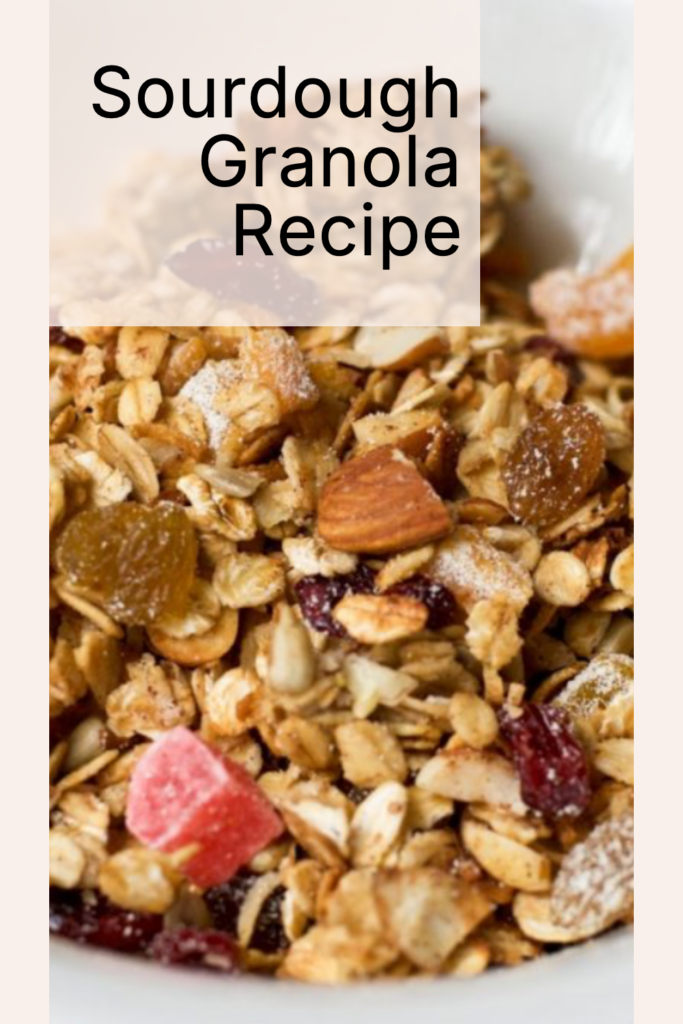
Sourdough granola isn’t just a delicious treat for your own table—it also makes a thoughtful and delightful gift! Simply place it in an attractive jar, tie it with a ribbon, and you’ve got a homemade present that’s sure to impress. Whether you’re enjoying it as a crunchy breakfast topping or sharing it with loved ones, this recipe is a wonderful way to make the most of your sourdough discard while adding a little extra joy to every day.
I hope you love it as much as I do! 👩🍳
*This post contains affiliate links. For further information please see my disclosure policy.

